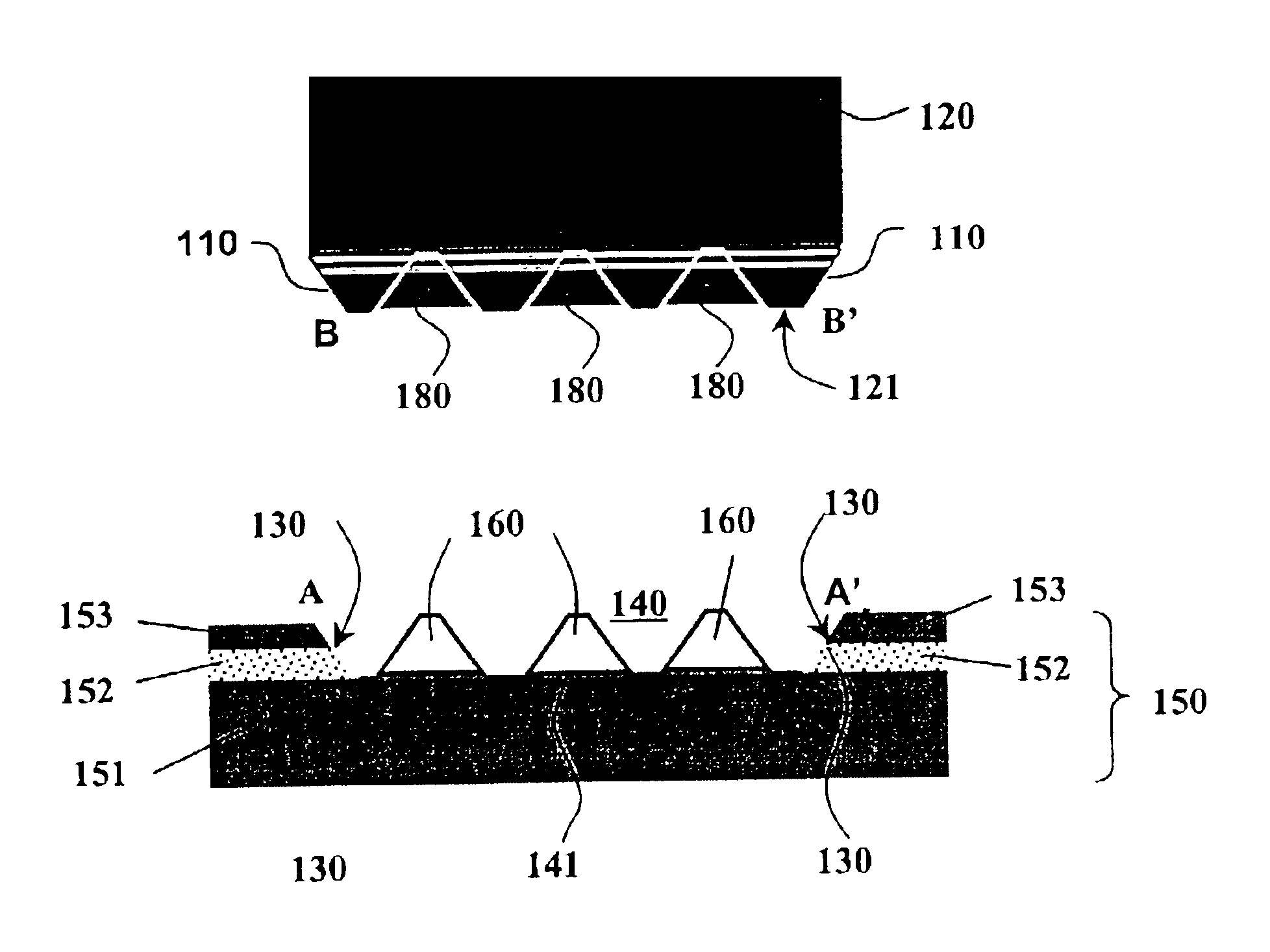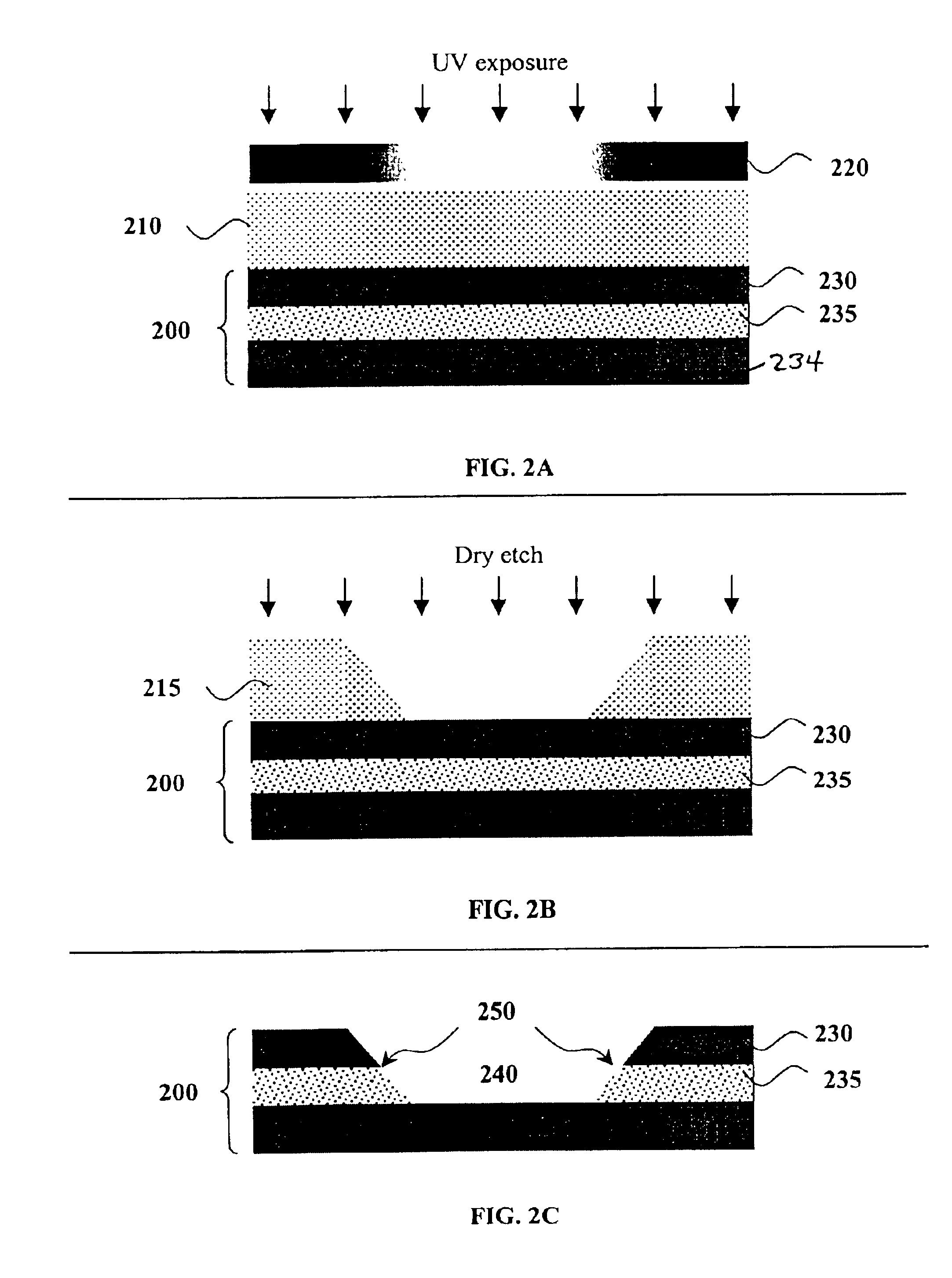Photonic chip mounting in a recess for waveguide alignment and connection
- Summary
- Abstract
- Description
- Claims
- Application Information
AI Technical Summary
Benefits of technology
Problems solved by technology
Method used
Image
Examples
Embodiment Construction
[0039]FIG. 1 is a cross-sectional view of an exemplary embodiment of a photonic chip mounting arrangement according to the present invention. Recess 140 is formed in top layer 153 and insulating (SiO2) layer 152 of silicon-on-insulator (SOI) or silica-on-silicon (SOS) substrate 150. End walls 130 of recess 140 have a nonzero (preferably greater than 10°) inclination angle with respect to vertical; the specific choice of inclination angle will be discussed in more detail below. In some embodiments, all side walls of recess 140 have similarly inclined surfaces, although this is not required. Recess 140 has a substantially flat bottom surface 141. In one embodiment, bottom surface 141 has a surface area of about 300 μm by 300 μm. In one preferred embodiment, a number of pillars 160 (which may be anywhere from 2 to 50 μm tall) are formed on bottom surface 141, each pillar having inclined side faces. Preferably, three pillars 160 in a triangular arrangement are used, but the number and p...
PUM
 Login to View More
Login to View More Abstract
Description
Claims
Application Information
 Login to View More
Login to View More - R&D
- Intellectual Property
- Life Sciences
- Materials
- Tech Scout
- Unparalleled Data Quality
- Higher Quality Content
- 60% Fewer Hallucinations
Browse by: Latest US Patents, China's latest patents, Technical Efficacy Thesaurus, Application Domain, Technology Topic, Popular Technical Reports.
© 2025 PatSnap. All rights reserved.Legal|Privacy policy|Modern Slavery Act Transparency Statement|Sitemap|About US| Contact US: help@patsnap.com



